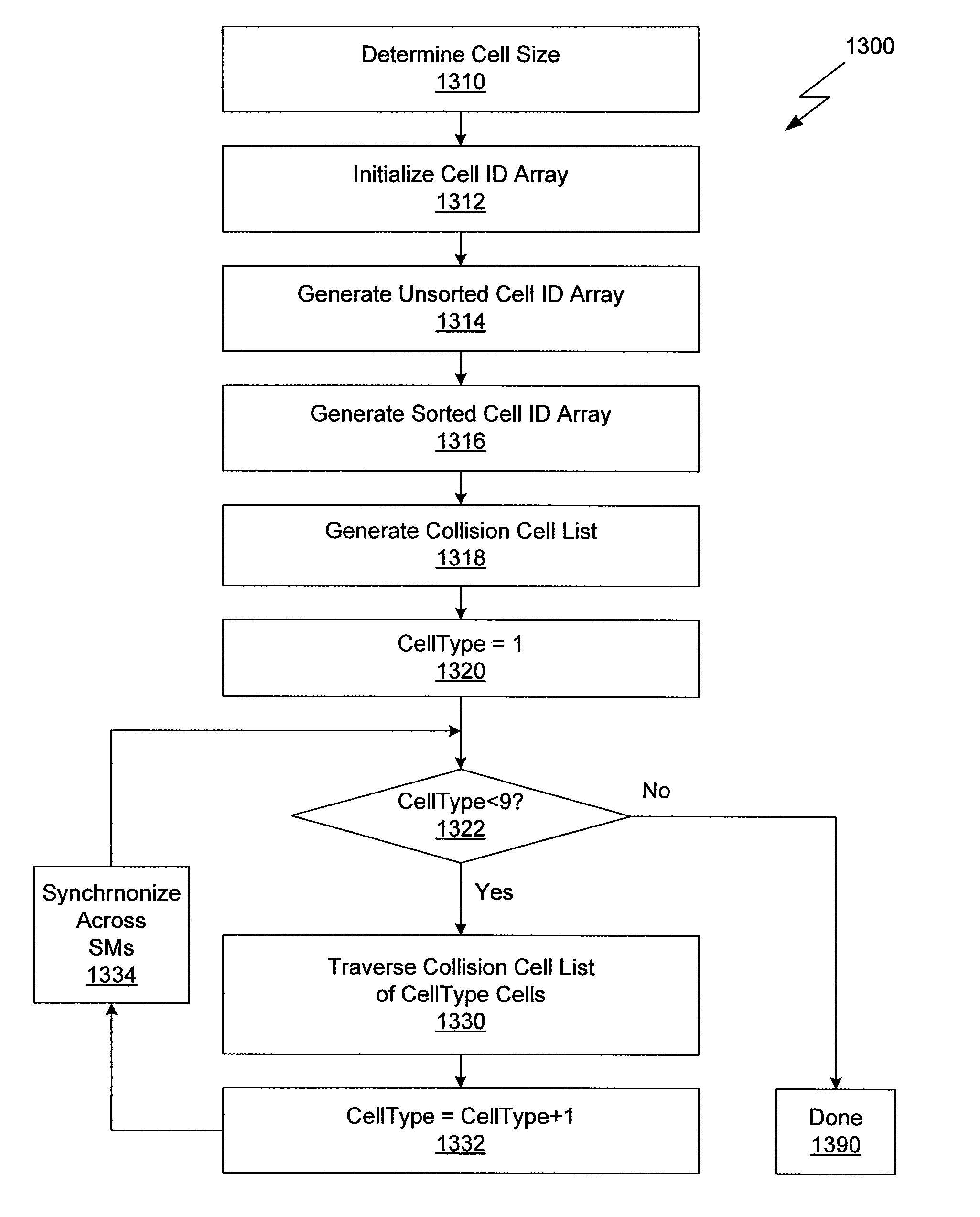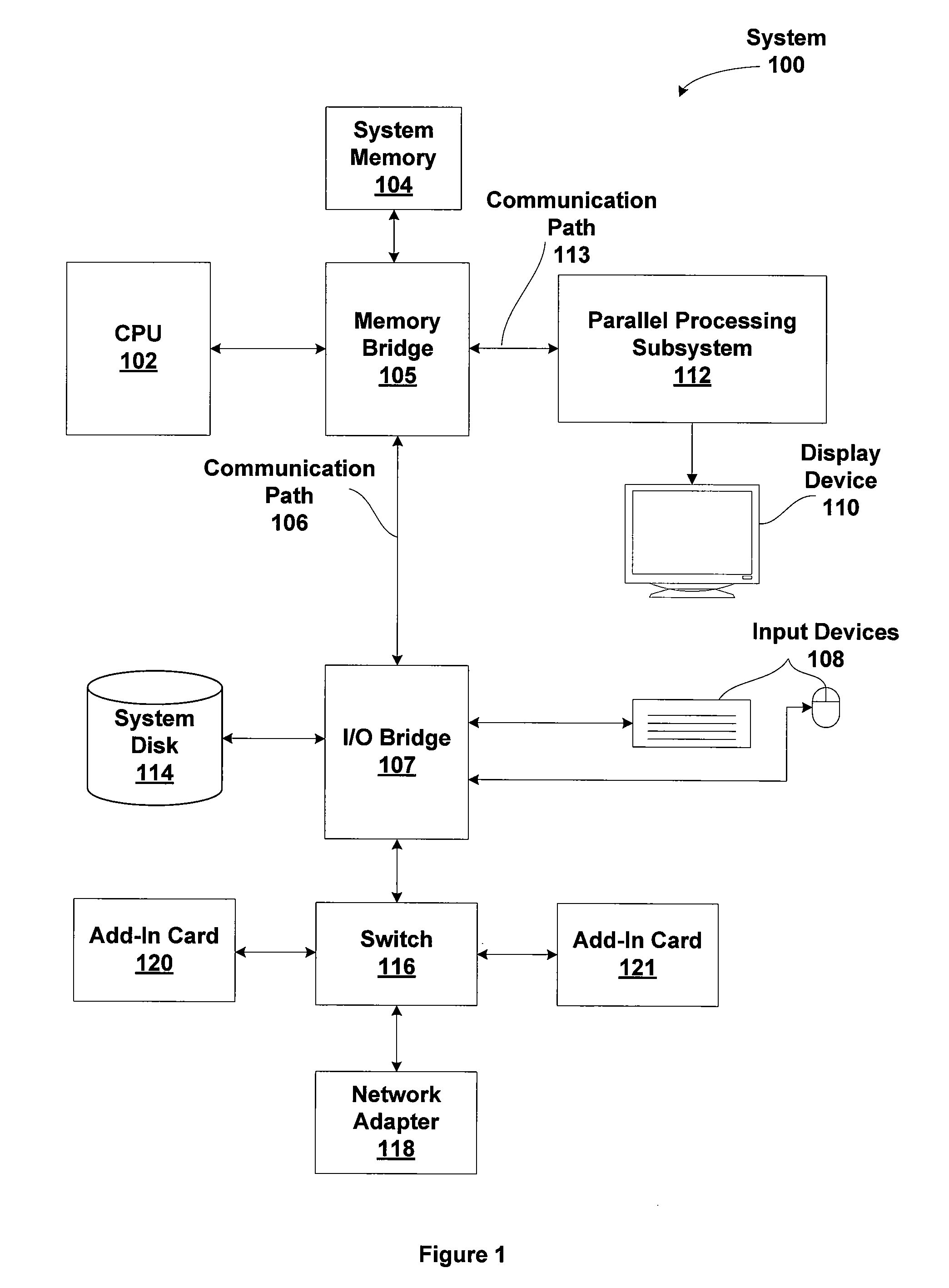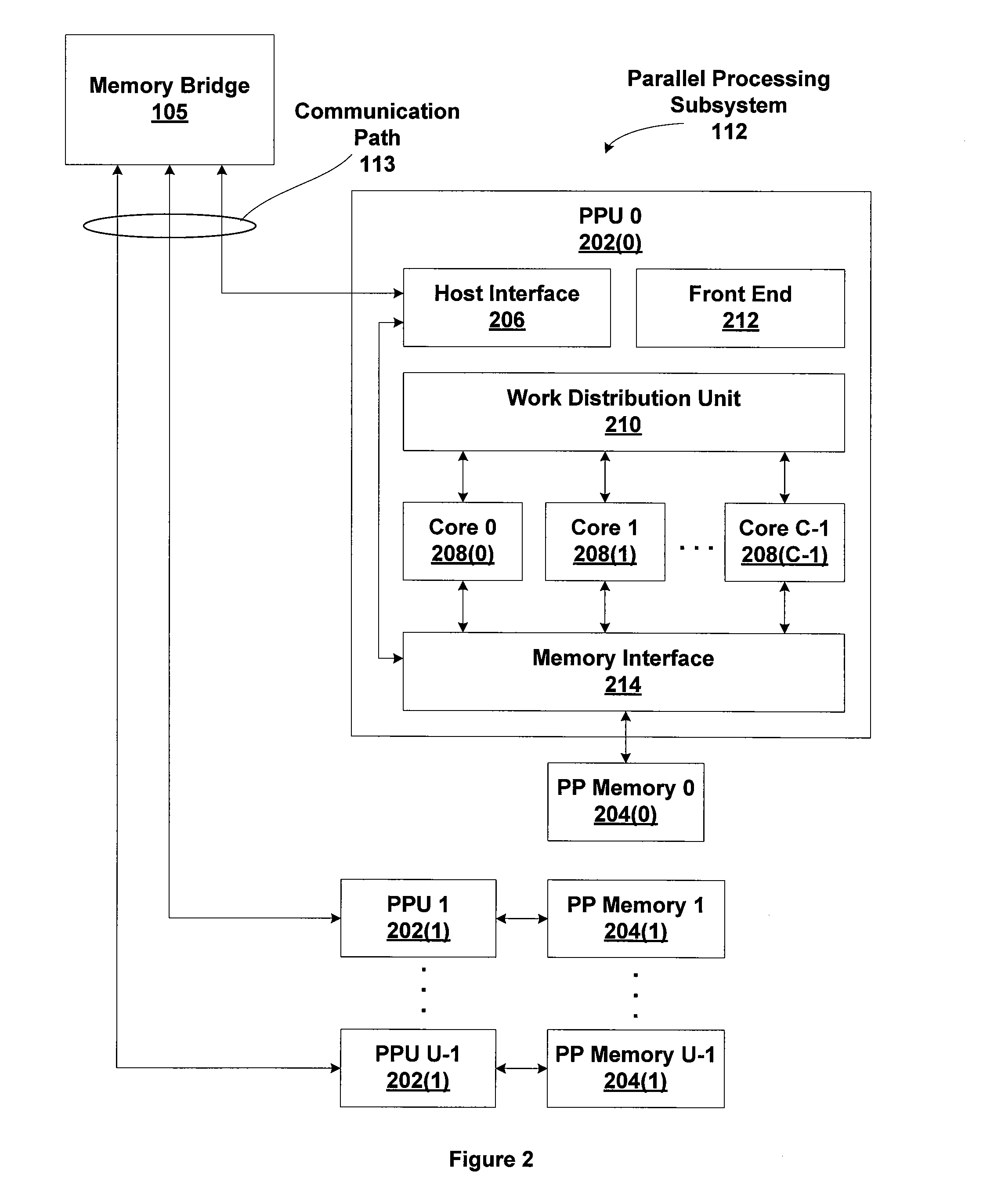System and method for reducing the complexity of performing broad-phase collision detection on GPUs
a broad-phase collision and detection system technology, applied in the field of parallel processing, can solve the problems of not achieving the effect of parallel processing, avoiding potentially significant computational effort, and certain other types of processing tasks, etc., and achieve the effect of substantially increasing computational efficiency
- Summary
- Abstract
- Description
- Claims
- Application Information
AI Technical Summary
Benefits of technology
Problems solved by technology
Method used
Image
Examples
first embodiment
[0091]FIG. 12 is a flow diagram of method steps for performing broad-phase collision detection, according to the present invention. Although the method steps are described in conjunction with the systems of FIGS. 1, 2, and 3, persons skilled in the art will understand that any system that performs the method steps, in any order, is within the scope of the invention.
[0092]The method begins in step 1210, where a cell size is determined for uniformly partitioning the 3D coordinate system into one or more arrays of cubical cells. The cell size is defined as the length of each edge of a uniform cube within the array. The cell size should be at least 1.5 times the diameter of the largest bounding sphere to be processed. The radius of each bounding sphere is the square root of two times the radius of each object to be processed.
[0093]In step 1212, a cell ID array is initialized to allocate space that includes entries for each bounding sphere associated with each object to be processed. For...
second embodiment
[0097]FIG. 13 is a flow diagram of method steps for performing collision detection analysis in multiple passes, according to the invention. Although the method steps are described in conjunction with the systems of FIGS. 1, 2, and 3, persons skilled in the art will understand that any system that performs the method steps, in any order, is within the scope of the invention.
[0098]The method begins in step 1310, where a cell size is determined for uniformly partitioning the 3D coordinate system into one or more arrays of cubical cells. The cell size is defined as the length of each edge of a uniform cube within the array. The cell size should be at least 1.5 times the diameter of the largest bounding sphere to be processed. The radius of each bounding sphere is the square root of two times the radius of each object to be processed.
[0099]In step 1312, a cell ID array is initialized to allocate space that includes entries for each bounding sphere associated with each object to be proces...
PUM
 Login to View More
Login to View More Abstract
Description
Claims
Application Information
 Login to View More
Login to View More - R&D
- Intellectual Property
- Life Sciences
- Materials
- Tech Scout
- Unparalleled Data Quality
- Higher Quality Content
- 60% Fewer Hallucinations
Browse by: Latest US Patents, China's latest patents, Technical Efficacy Thesaurus, Application Domain, Technology Topic, Popular Technical Reports.
© 2025 PatSnap. All rights reserved.Legal|Privacy policy|Modern Slavery Act Transparency Statement|Sitemap|About US| Contact US: help@patsnap.com



